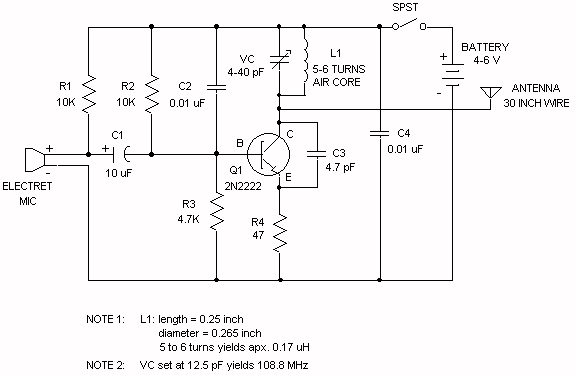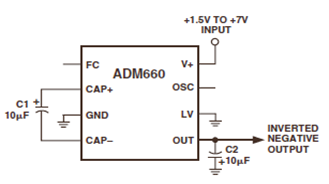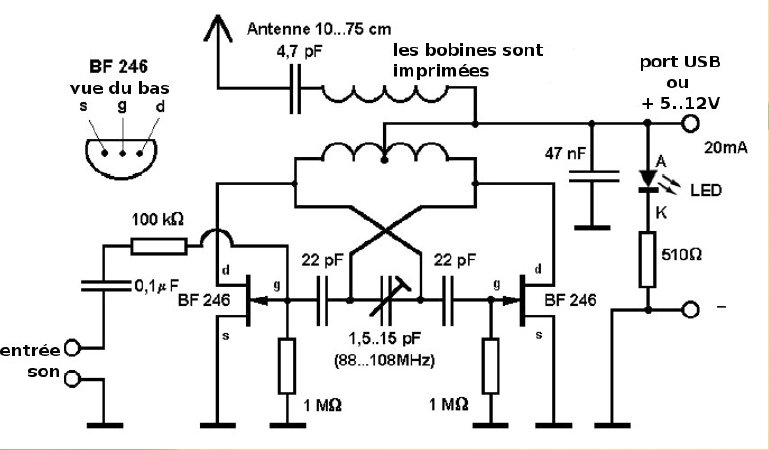
EXPERIMENTAL DATA TRANSMITTER FORFIBER OPTICS

This schematic for an experimental data transmitter utilizes optical fibers and a laser diode. The transmission frequency of the free-running oscillator is approximately 3 kHz. Resistor R5 may need to be adjusted to match the specifications of the laser diode. The integrated circuit used in the design is a CD4093.
The experimental data transmitter circuit is designed to facilitate the transmission of data through optical fibers using a laser diode as the light source. The CD4093 integrated circuit, which consists of four NAND gates, is employed to generate the necessary square wave signal that drives the laser diode. This IC is known for its versatility and ability to operate at low power, making it suitable for various applications in optical communication systems.
The oscillator circuit is configured to operate at a frequency of approximately 3 kHz, which is suitable for certain types of data transmission. The frequency can be fine-tuned by adjusting resistor R5, which is part of the timing network. This adjustment is crucial as it ensures that the modulation frequency aligns with the characteristics of the laser diode being used, optimizing the performance of the transmitter.
The optical fiber used in this setup serves as a medium for transmitting the modulated light signal generated by the laser diode. The choice of optical fiber should be compatible with the wavelength of the laser diode to ensure minimal signal loss and optimal data integrity. The circuit is designed to be compact and efficient, allowing for easy integration into various experimental setups where data transmission is required.
Overall, this schematic provides a foundational approach to building a basic optical data transmitter, suitable for experimentation and further development in optical communication technologies.This schematic for an experimental data transmitter uses optical fibers and a laser diode. Trans-mission frequency of the free-running oscillator is approximately 3 kHz. R5 might have to be varied to suit your laser diode. IC1 is a CD4093.. 🔗 External reference
The experimental data transmitter circuit is designed to facilitate the transmission of data through optical fibers using a laser diode as the light source. The CD4093 integrated circuit, which consists of four NAND gates, is employed to generate the necessary square wave signal that drives the laser diode. This IC is known for its versatility and ability to operate at low power, making it suitable for various applications in optical communication systems.
The oscillator circuit is configured to operate at a frequency of approximately 3 kHz, which is suitable for certain types of data transmission. The frequency can be fine-tuned by adjusting resistor R5, which is part of the timing network. This adjustment is crucial as it ensures that the modulation frequency aligns with the characteristics of the laser diode being used, optimizing the performance of the transmitter.
The optical fiber used in this setup serves as a medium for transmitting the modulated light signal generated by the laser diode. The choice of optical fiber should be compatible with the wavelength of the laser diode to ensure minimal signal loss and optimal data integrity. The circuit is designed to be compact and efficient, allowing for easy integration into various experimental setups where data transmission is required.
Overall, this schematic provides a foundational approach to building a basic optical data transmitter, suitable for experimentation and further development in optical communication technologies.This schematic for an experimental data transmitter uses optical fibers and a laser diode. Trans-mission frequency of the free-running oscillator is approximately 3 kHz. R5 might have to be varied to suit your laser diode. IC1 is a CD4093.. 🔗 External reference





